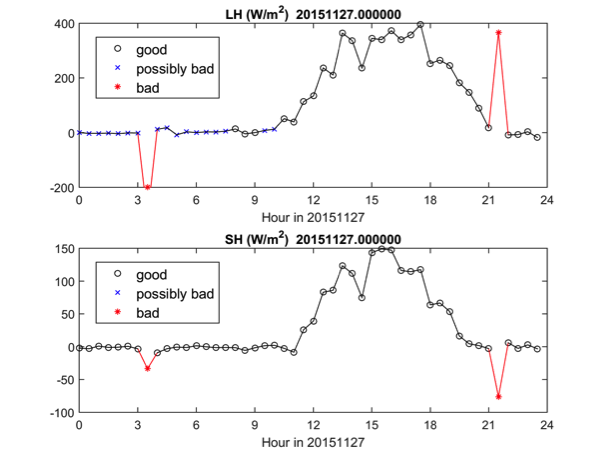
Quality-Controlled Eddy Correlation Flux Measurement (QCECOR) value-added product data were reprocessed for the first ARM Mobile Facility (AMF1) deployment at Manacapuru, Brazil, from April 2014 to December 2015, as a critical component of a two-year scientific collaborative field campaign, the Green Ocean Amazon (GoAmazon) 2014/15. The QCECOR data provide surface sensible and latent heat flux to the ARM user community.
Eddy correlation flux measurement systems (ECOR) are used by the ARM Climate Research Facility to provide surface turbulence flux measurements. The ARM Facility has significantly enhanced its ECOR systems and made them available at all its fixed research sites and mobile facilities. The QCECOR VAP improves the ECOR data by applying the following quality control (QC) procedures:
- Eddy correlation corrections
- Determination of the quality-controlled energy fluxes from the corrected ECOR fluxes
- Stringent QC checks.
This release’s major update is the addition of a value in QC flag of latent heat flux. In this version, the value of latent heat flux from ECOR is kept when qc_latent_heat_flux equals 1. This was done for the case when surface energy balance system (SEBS) wetness data report values less than 2, which hints at rain or a dew situation on the instrument. Such cases happen frequently, so the VAP developers warn users to use the latent heat flux data under such conditions with great caution.
Feedback and use of the data are welcomed and encouraged. For questions or to report data problems, please contact Shuaiqi Tang, Yunyan Zhang, or Shaocheng Xie. To access the data set, please browse the ARM Data Archive. (Go here to create an account to download the data.)
# # #
The ARM Climate Research Facility is a national scientific user facility funded through the U.S. Department of Energy’s Office of Science. The ARM Facility is operated by nine Department of Energy national laboratories.

